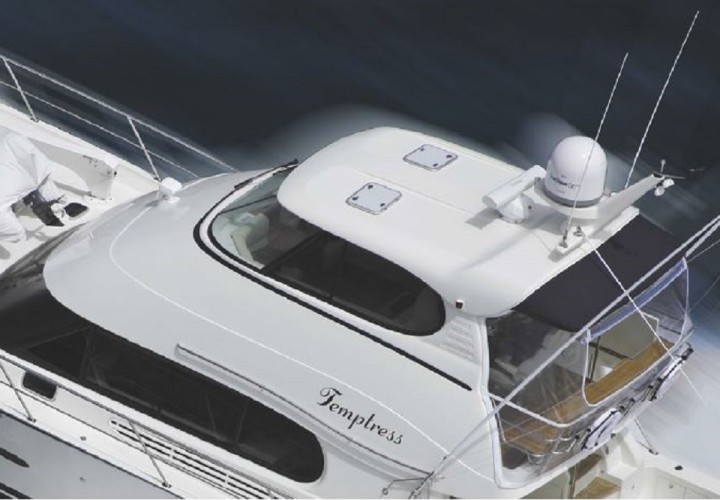Twenty five years ago few people had heard the term ‘Internet’. When it became commercially available years later most people were trying to figure out why they would ever need it. Now most people worry how they would survive without it. As such, we are compelled to bring our computers to sea with us as best we can.
‘Best we can’ is of course very subjective with some boaters happy to have any sort of communications while others will begrudgingly compare their onboard system shortcomings to their Phone and home internet system. The maritime satellite phone industry has been trying to keep up with these needs and offers dozens of solutions. This article will try to sort out and explain the different systems currently available.
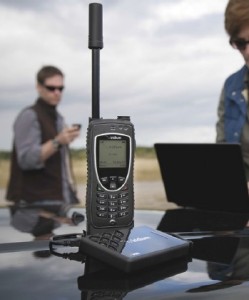
All the systems described here provide voice communication. Some may require the use of a country code and an extra button push to send and end a call but are still simple to use. All of the systems presented here are also data communications capable although the data rates and ease of use will vary greatly between them. There is not enough space here to go into the operating details on each system so it will be important that the buyer researches, understands, and is happy with the process needed to use data. Besides voice and data most systems offer short messages service (SMS) an inexpensive text messaging – and faxing is still offered through some systems (though may not be offered for all models within that system) although some optional equipment and additional charges may apply.
Data Terminology & Facts
A short note about data terminology. Bits are typically used to measure data rates (speed) such as kilobits per second (Kbps) or megabits per second (Mbps) and are labeled with a small case ‘b’. Bytes are used to measure file sizes (volume) such as a 10 megabyte document (10MB) and are labeled with an upper case ‘B’. One byte is composed of eight bits (in marine data communications 1kb generally equals 1024 bits). As you can see, a 2 MB JPEG Smartphone photo would be a long (and if paying by the minute, expensive) download at 28 Kbps.
Service rate plans vary greatly in both price and structure between the different systems offered. The simplest is a prepaid flat rate per minute fee offered by the satellite handheld phone providers. A block of time is purchased with an expiration date for unused time and the rate charge based on the number a minutes purchased. Block minutes can be purchased by phone or email if running low. The obvious drawback to this is inadvertently running out of minutes and not being able to recharge your account.
To avoid the inconvenience of monitoring your minutes, a monthly fee service is offered with varying rate plans based on number of minutes purchase. Typically the plan is a one year contract (although shorter terms may be available) and unused minutes do not roll over into the next month. Going over your plan minutes will result in a per minute overage surcharge but most contracts allow you to move up in plan (restarting the contract period) if you are habitually going over your monthly allotment.
Because of the convenience almost all rate plans are monthly based. In the case of the handheld phones, rate charges are usually by the minute irrespective of usage (voice or data) making planning easier. Additional charges can include SMS, voicemail (if available), long distance, roaming, incoming call surcharges and I’m sure a few others I missed. Most phones will incur an initial activation fee and some a reactivation fee if deactivated for a while. Most System Providers use airtime resellers to provide service plans and because of this you will see variations in the plans offered for the same equipment.
Antennas
Through years of advancing technology we are at the point where voice calls and slow data rates can be accomplished with very small antennas. The only reason for using larger antennas is higher data speeds. The importance of data with these systems is clearly shown in the rate plans with voice taking a back seat.
The two systems available to us are Inmarsat Fleet Broadband and VSAT. Inmarsat has been around for many years, initially aimed at the commercial/ large yacht market. Over time their equipment has come down in size and cost with the latest iteration being the Fleet Broadband series.
VSAT (very small aperture terminal) technology has also been around quite a few years. Most of the applications were outside the marine industry for very intensive data users. When it migrated to the marine world its size and weight limited it to commercial applications, seldom showing up on yachts under 120’. In addition, it is not worldwide and transitioning between coverage zones can be less than seamless. A few years ago KVH Industries introduced their mini-VSAT Broadband system, using new technology which greatly reduced the size, weight and cost of VSAT while offering an almost worldwide’ seamlessly transitioned, high-speed data network.
The KVH mini-VSAT is offered in two versions, either of which will fit on most boats.
Inmarsat uses airtime resellers for their airtime access so there will be variations in rate plans. Inmarsat plans have been based on a bundled mix of services (i.e. – X dollars = X number of MB of data, X number of voice minutes and X number of SMS messages). Typically three to five different rate plans are offered. RecentlyInmarsat implemented a rather hefty price increase and changed the rate plan format. Current bundling is for data rates with prices for voice and other services indexed to a discounted rated but billed on a per minute or per event basis( i.e. – X dollars = X number of MB of data, voice calls billed @ x per. minute, SMS billed @ x each time sent). In this case overage charges apply to data only. Most contract periods now are less than a year and the user can move up in plan if needed.
KVH does not use resellers for airtime making rate plan choices much easier. Currently KVH mini-VSAT consists of two models – the V3 and V7 – each with separate plan packages.
Calling Questions
A few notes on stated rates. Voice calls are listed as ship to shore calls. When calling from shore to ship (or ship to ship) there are a few things to consider. With the exception of Inmarsat phones the ship pays for incoming (sometimes at a higher rate than the outgoing plan) as well as outgoing calls. However, the shore based caller can rack up some eye popping connection charges if caught unaware. Landline service providers consider satellite connections the most exotic of all and $10.00 per minute charges are common. Satellite phone providers have ways to mitigate this problem, such as two stage dialing.
Be sure to provide this information to anyone you give your sat phone number out to. Another item to consider is advertised data rates. These are the maximum rates attainable. Actual rates will vary but by how much is usually not stated. The exception to this is KVH mini-VSAT who provide approximate data rates.
Installation Issues
Satellite phones are available in either a handheld or fixed mount form. Handhelds are attractive as there is no installation involved and portability can be useful to some owners. The drawback to handhelds is that the user must be outdoors (under a canvas or a thin, non-cored fi berglass top is usually OK) to make a call- unattractive for voice calls and extremely inconvenient for data calls. This usually also precludes incoming calls.
Because of this the handheld providers offer docking stations with externally mounted antennas (beware – the cost of these kits can be as much or more than the phone itself). While this solves most of the handheld drawbacks keep in mind the fixe mount phones have the advantage of much higher data speeds and the ability of simultaneous voice and data calls.
A BRIEF DESCRIPTION OF AVAILABLE SYSTEMS :
Iridium
A handheld phone offering voice and slow speed data (10kbps), Iridium is the only truly worldwide sat phone. It operates with a large constellation of LEO (low earth orbit) satellites In fact, the satellites are so low that the one handling your call will only be in view a few minutes, necessitating a handoff to another satellite as it comes into view.
Out on open water this is not a problem (a short ‘dead airtime’ moment will be noticed) but on land or close to shore where an obstruction is between you and the handoff satellite the call may be dropped.
Iridium also offers a fixed unit called OpenPort. This basically uses multiple transceivers and antennas grouped together to allow higher data speeds, multiple voice calls or a combination of the two. OpenPort has not found wide use in the yacht market. In the
next few years Iridium will be replacing its constellation with a new generation of satellites offering much higher data speeds and other improvements.
Inmarsat IsatPhone Pro
This is the latest handheld phone offering voice and low speed data (20kbps) with worldwide service below (approx.) 80 deg. latitude. Utilizing GEO (geostationary orbit) satellites you must have an unobstructed view of the satellite and normally only one is available for your location. Your location will determine the azimuth and elevation angle to the satellite, which will be low on the horizon at the higher latitudes, although blockage will occur at lower latitudes if an obstruction is tall enough in the right direction. The IsatPhone is also offered in a couple of fixed mount versions.
Globalstar
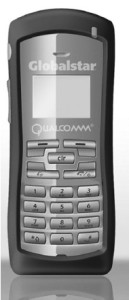
A regional handheld system with voice and low speed data (9.6kpbs, up to 38kbps possible). Its coverage area is North, Central and South America, Europe, Northern Asia, Australia and New Zealand. It normally does not cover open ocean areas, typically extending seaward approximately 200 nm from the landmass it was designed to cover. Using a multi-satellite LEO constellation it has the lowest latency (time-delay) of all the satellite phone systems. It is unique in that normally two or more satellites are in view, all simultaneously handling your call, so when a satellite disappears from view your call is not dropped. Fixed mount systems are offered.
Globalstar was very popular with boaters traveling outside of cell coverage when it was introduced in 2000, but by 2005 the satellite voice service began to fail prematurely becoming useless to boaters by 2007. Additionally, roaming with the phone from one Globalstar region to another was never as seamless (or sometimes even possible) as advertised. Globalstar is in the process of launching their next generation satellites and rebuilding their system.
Thuraya
This is another regional handheld service with voice and 9.6kbps data. It uses GEO satellites to cover Europe, Africa, Asia and Australia (not New Zealand). It also covers extensive open ocean areas in these regions. Fixed mount units are also offered.
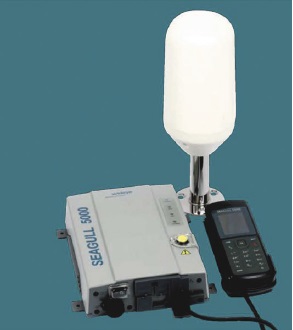
Inmarsat Fleet Broadband
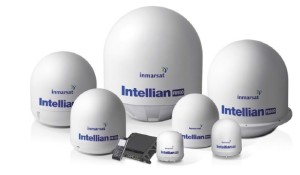
Inmarsat’s current fixed mount product line. Using three GEO satellites it provides global coverage to approximately 80 deg. latitude. It consists of three models. All three offer a single voice channel with 2 voice lines: one is a factory supplied dedicated handset used for calls and system programming with its own phone number, the second voice line is a supplied phone jack with a dedicated phone number to be used with an owner supplied POTS phone. Only one phone line can be used at a time but either one can be used at the same time as a data call.
Data speeds range from 150 to 430 kbps which is approximated by the model number. The antenna dome size goes up with speed from 10” up to 26’” for the FB500. All three offer SMS service with the FB250 and FB500 also providing faxing. Inmarsat is working on their next generation system – Global Express – with plans to start launching satellites shortly. Though few years away the new system will offer data speeds substantially higher than the current FB.
KVH mini-VSAT
Is currently the premier fixed mounted satellite system. Ten GEO satellites are used to provide almost worldwide coverage– almost meaning where 90% of maritime traffic flows. North of the equator is mostly covered but south of the equator parts of the South Pacific, South Atlantic and southern Indian Ocean are not covered.
The mini-VSAT is offered in two versions. The V3 uses a 14.5” dia., 25 lb. dome. It is equipped with a single voice line (owner to provide POTS phone) and a data line operating at 2 Mbps down (incoming) and 128kbps up (outgoing). Voice and data can be used simultaneously and faxing is an option. The V7 uses a larger antenna (26” dia., 60 lbs.) for even higher data rates. With this system 2 Mbps down and 512kbps up speeds are available. It comes standard with 2 voice lines and up to 4 more are optionally available (dependent on uplink speed). With a high speed Fixed Standard plan the V7 can be the equivalent of a land based Internet connection. Both the V3 and V7 offer up to 5 virtual local telephone numbers per phone line (where available, plus monthly service fee) to reduce incoming call connection charges and up to 5 static IP addresses per modem. User restrictions include no streaming video, web cams, high speed gaming and a few others.
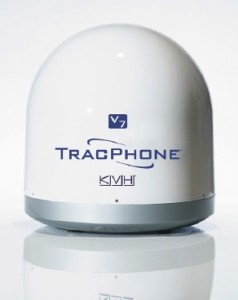
So what system should you buy?
The voice part is fairly simple – how much do you plan to talk vs. rate plans available. Will you be calling so rarely that you are willing to stand outside with a handheld or do you want the convenience of a fixed system? Will incoming phone calls be an important part of your system? Will you need more than one voice line? Is the ability to talk on the phone while using your computer online at the same time important?
The data side is a bit more complicated. Most boaters plan on using their computers less while cruising but still want the capability of full (or close to full) service. The most basic of data rates at 9.6 kbps will allow for very short emails without attachments or basic weather data but to go online to download a multi page owner’s manual or order a couple of parts online will require much higher data speeds and will use up much more data units.
The problem is that most computer users have no idea of their daily home /office usage in terms of bytes used. When you say you anticipate your computer time will drop from one hour per day at home to 15 minutes per day aboard how does that equate to MB per day?
Hootechmeter.com offers a piece of soft ware called Netmeter that allows you to monitor your data speed and usage on an hourly, daily and weekly basis. A bar graph can be shown in real time showing incoming and outgoing data speeds. The program is easy to use and is offered with a 30 day free trial period.
What is interesting is how much communicating your computer does while you are logged on to the Internet but sitting in an idle mode. These are normal housekeeping chores and eat up a lot of data over time. On a Fixed rate plan this is of no consequence (just like at home) but on a Metered or per minute rate plan this is costing you money. On board it is important to shut off as many of these automatic functions as possible (i.e. – Windows auto updates) and to log off your computer between data sessions.
Failure to log off can result in a huge bill. Again, none of this is an issue with a Fixed rate plan. Monitoring your data speeds on shore can also have some onboard planning benefits. For most users it is the download speed that is the more important of the two. With a Metered plan you are paying for the data used – not the speed. But you do have a choice of speed based on the equipment you choose. Large downloads or multiple users can be frustrating if you picked too slow a system. Another variable is where you will actually be cruising. A sat phone is usually assumed to be used only when outside of cell range. But this is not always the case. In some areas cell phone charges can be higher than sat phone rates. You may find yourself in an area where your cellphone type may not work (GSM, CDMA, etc.) or data service is slow or unavailable. Or, as we have all experienced, the cell coverage may be a little spottier than advertised. You may find yourself using your sat phone more than you thought you would.
Other Users
So while you’re mulling over your own communication needs, how about those of your friends, family and crew. That’s right, unless you like to go boating alone, in this ever connected world they are going to need some link to the outside world as well. At the very least people expect to be able to call home on a daily basis and the reality is that more and more people, even on vacation, are expected to call the office or check emails a couple of times a day. Owners worry about a boat full of guests with their faces stuck to a computer screen all day but the fact is the guests usually come along for the boating and the ability to stay touch with their home or office can make or break their being able to make the trip.
Determining the costs of the various systems can be difficult. If you seldom leave cellphone coverage, plan on using the sat phone for emergency voice calls only and don’t mind standing outdoors to talk then the least expensive handheld (that will work in your area!) with the most basic plan is the obvious choice.
If frequent voice calls are your sole or primary usage then the choices are not too difficult. But calculating the data rate plan you require can be difficult and may change over time.
As mentioned before, if you pick a plan that is undersized to your data needs you have the option of moving up in plan size. But be careful with this. Moving up in plan lowers your rate but usually not by a tremendous amount. At some point a step up in plan can really be an ‘oops’ factor in not planning ahead well – you really should have gone with a system that had been more expensive upfront (equipment cost) and less expensive in airtime. The true cost of satellite phone ownership for most users is the airtime cost – not the equipment. For high volume users the more expensive systems will cost substantially less to own.
Back Up & Placement
So you’ve decided on a sat phone and are ready to move ahead but is one enough? For most boaters yes, but not all. Most boaters would like some form of backup in case of failure. SSB radio is still a good emergency option – a direct link to the Coast Guard and the ability to talk long range with other vessels.
Installation is the final concern. Planning is extremely important. LEO systems are the easiest but even though they do not need to look at a specific point in the sky antenna blockage should be minimized. Also, some of the available docking stations are somewhat bulky and the owner should physically see this and consider its required cabling before it gets mounted. GEO systems require serious planning. The manufacturers would like the antenna to be at the clearest (highest) point on the boat – so would the manufacturers of the Sat Compass, Sat TV antenna, wind transducer and anchor light. It’s all about blockage (and occasionally interference).
The installation manuals can give the owner a starting point but sometimes, due to the manufacturers’ conservative and rigid installation demands, leaves him wondering how he will be able to get all the antennas installed that he needs and still have a working sat phone.
This is where an experienced installer becomes invaluable. If compromises must be made you want to make sure you make the right ones and the best advice on that is from someone who has experienced the wrong ones.
Now for two parting tips on using your new sat phone. First, when calling someone for the first time from your sat phone there is a good chance that person has never talked via sat phone before. The first thing to say is ‘I’m calling from a sat phone’. The person may not know what to expect but they will expect something different is about to happen.
That gives you time to explain the time delay and the importance of not interrupting while the other person is talking. Second, more boaters are relying on their sat phone as an emergency communication device. When I ask them what number they would use to dial the Coast Guard they don’t have a clue. I would recommend a laminated card with any emergency numbers you can think of mounted somewhere near the phone.


